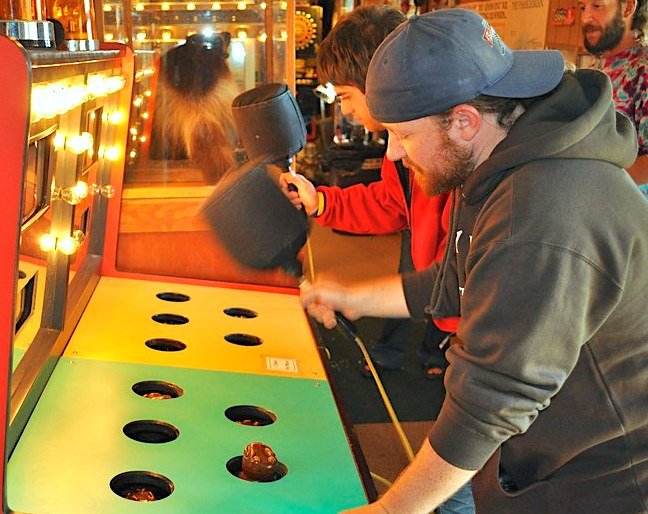Turnover Whac-A-Mole
You’ve done it! You’ve actually launched your own wine or whiskey company, created a brand, and carefully guided that product to the market. Finally, it’s ready to be sold.
How exciting!
Now it’s time to hop in the car. You’ve got to schedule appointments with the best restaurants and retailers, make the rounds, and give a passionate pitch about why your bottle is special.
What’s that? You’ve already made a few placements and several accounts have placed an order? That’s fantastic! Just be prepared to go back in a few months and make that same pitch all over again.
That’s right. In addition to all the accounts you’ve still yet to visit, you’ll need to revisit the exact same accounts you’ve already spent time training and educating.
Why? Because in 2022 the turnover rate for bars and restaurants in the American hospitality industry was up around 75%. So while you may have completely won over the previous bar manager, head sommelier, drinks director, and most of the servers, many of those folks have since moved on. The staff that had once been pushing out ten cases a month of your product has been replaced by an entirely new staff, one that knows nothing about your brand.
As a recent article in QSR stated: “High staff turnover rates are fast becoming the Achilles’ heel of the hospitality industry.”
It doesn’t get any better for retail. A survey taken at the end of 2022 showed that turnover for hourly retail positions was up to 75.8%, so three-quarters of those sales floor soldiers you trained during your last visit to the liquor store have likely moved on as well. You’ll have to go back and start all over again. Hopefully the new recruits are as receptive to your sales pitch as the last group. Don’t worry if they’re not. There will likely be an entirely new group to train in another few months.
All sarcasm and cynicism aside, the Sisyphean game of marketing Whac-A-Mole that has developed due to high turnover in the retail and hospitality sectors has many brand owners rethinking their overall strategy. Whereas winning over key retail stakeholders and heralded beverage directors was once a guaranteed path to increased sales and credibility, today that strategy isn’t nearly as sound. Turnover at an integral account can turn forecasting into a nightmare, and that change in direction can completely disrupt momentum.
“It’s been incredibly difficult,” a California winemaker who asked to remain anonymous told me this week during a phone conversation; “You get on a by-the-glass list and you’re sending in five cases a week. Those numbers get projected into the monthly sales. Then the wine director suddenly takes a new gig elsewhere and you’re back down to zero. It’s frustrating.”
I can speak with some authority about turnover in retail, as my own evolution has had the same effect for brands I was passionate about during my retail tenure. Not only have I moved on, but many of my ex-colleagues as well, and the companies we once worked closely with have been distressed over plummeting sales since our departures. We were once their advocates, informing customers about the merit of their brands, but without a continuing voice to rally the troops there’s been little movement in our wake. When one buyer steps out and another steps in, there’s no guarantee that previous relationships will continue in the same manner or fashion.
Granted, turnover in both restaurants and retail has always run high, but today it’s happening faster, in a market that is more competitive than ever. Add in an insatiable thirst for new blood and you’ll discover it’s damn near impossible to keep the attention span of an account for more than a few days. For brands large enough to afford sales distribution, the need for added incentives has never been greater. Sales reps are being bombarded by brand owners who are desperate for their help and willing to pay extra for additional focus (which is often just any bit of focus). Smaller brands who can’t cover the same territory are drowning in a sea of constant change.
Even the best relationship managers are feeling the pinch. As one friend in distribution told me this week: “Turnover absolutely makes this job harder. Life in general is about relationships, and relationships are about trust. Building relationships doesn’t happen over night. Trust isn’t built in a day. When you have to start over constantly, it’s draining.”
It’s like playing Whac-A-Mole for months and months on end.
Capitalizing on the hot account with its motivated sales team or dynamic bar staff is akin to whacking the mole each time its head pops up. You’ve only got a quick second to make your move before the mole goes back under, the manager takes a new position, the bartender quits, and it’s time to whack the next hot account. What’s the solution? To start, a marketing strategy that creates consumer demand independent of the on and off-premise. You need more than one sales and marketing arm to whack every mole in this landscape.
-David Driscoll
